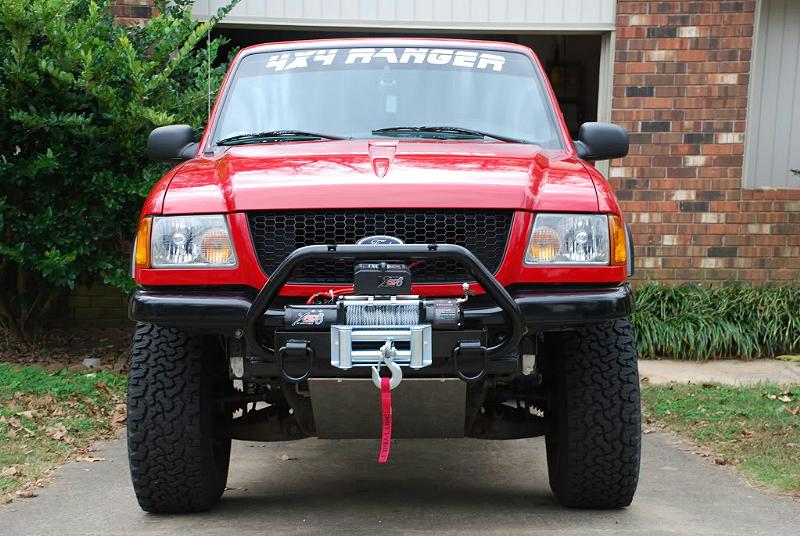
Up through the 1990’s, you couldn’t buy a new 8,000 pound winch for under $600.00. Things began to change around 2002 when Milemarker began importing winches to Florida, adding the electrical solenoids and remotes, and selling them under $400.00. A few years later, Smittybilt entered the competition and began offering an 8,000 pound winch for under $400.00 as well.
What Size Winch:
The thing I’ll never understand is why you see vehicles with 6,000 pound and smaller winches. I’ve actually seen Jeeps with 3,500 pound ATV winches on the front of them. They apparently think that their vehicle doesn’t weigh more than that.
Think of it like this….
Imagine tying a rope to the front of your Ford Ranger, placing it in neutral, and then pulling it over a flat level parking lot. Seems possible right? Now imagine if there was a rock in your way, a hole that it could get stuck in, or if the tires were stuck in mud. You suddenly realize how much more force you’re going to need to pull your truck out with a rope. You better go grab a bunch of friends. Take it one step further; your truck is on a steep hill and needs pulled up. As soon as you put it in neutral, gravity is going to drag you and your friends down the hill with it. You probably need a team of horses to pull it up that, right?
Hopefully you realize the work loads that could be placed on your winch. Let’s face it, you’re likely not going to use it to pull you out of a mud hole. You’ll just get someone to pull you out with a tow strap. You’re going to use a winch to get yourself out of some serious binds where it’s unlikely that someone could just pull you out with a tow strap. Such as up a steep hill, out of some rocks, or maybe something that you’ve gotten yourself stuck on top of. I once had to winch a bunch of trucks up a trail out of a ravine because the ground was frozen, and they couldn’t get any traction to climb their way out. I had to anchor the rear of my truck to a tree, and then spent a couple of hours winching one after another. Fortunately I had a good 9,500 pound winch.
I’m not going to go through a mathematical formula to tell you what size winch to get. Your options are 8,000 / 9,500 / 10,000 / 12,000 pound winches. Get the biggest one you can afford. 8,000 should be the minimum, and 9,500 is optimal. I’ve actually used a 12,000 (which is overkill for a Ranger) that was much slower than a 9,500 due to its gear reduction.
What Type of Winch to Buy:
First of all, make sure it’s at least an 8,000 pound winch.
Second of all, be careful of winches with the tubes across the top that hold them together. There’s not always a lot of clearance between these tubes and the cable, and if you don’t have someone spotting the winch, you could easily bust it if to much cable spools up in one spot.
Warn:
I really like Warn’s XD9i premium winch. I ran one for years on my 1983, and then my 1996 Ford Ranger. It’s a very well built winch with an integrated control box that provides excellent protection to electronics. I’ve actually had the thing submerged in water before.
You can see how much more clearance the cable has in the design below compared to the winch that broke above.
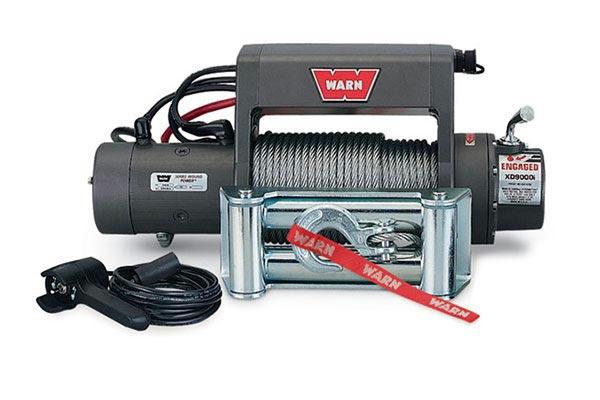
Warn 27550 XD9000i 9000-lb Winch:
If that’s more than you want to spend, and I don’t blame you, you should at least look for one that’s waterproof.
You may want to try the Warn VR8, which is also a waterproof winch.
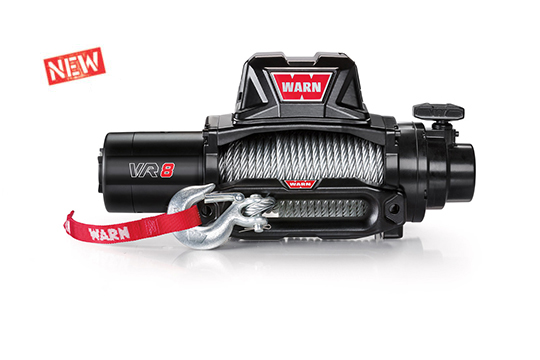
Warn 96800 VR 8 Winch:
Warn will, at its option, repair, replace or refund the purchase price of a defective Product or component. The Warranty Period is not extended
if we repair or replace the Product or its defective electrical component(s).
Items covered by this Warranty:
• Electrical components covered by the seven (7) year Limited Warranty: motor, contactor, solenoid, handheld remote controls,
wireless remote controls, wiring.• All other mechanical components are covered by the Limited Lifetime Warranty except as listed below.
Items not covered by this Warranty:
• The removal or reinstallation of the Product.
• Wire or synthetic rope.
• Product finish.
• Components damaged by accident, abuse, misuse, collision, overloading, modifi cation, misapplication, improper installation, or
improper service.• Normal wear and tear or loss of functionality due to the normal aging of the Product including, bearings, bushings, seals, O-rings,
gaskets, brake material, motor brushes, electrical cables.
Smittybilt:
Smittybilt has made improvements to their winches over the years. They now claim that their XRC and X2O winches are both waterproof.
The X2O winches come with a wireless remote, a lifetime mechanical warranty, and a 5-year electrical warranty.
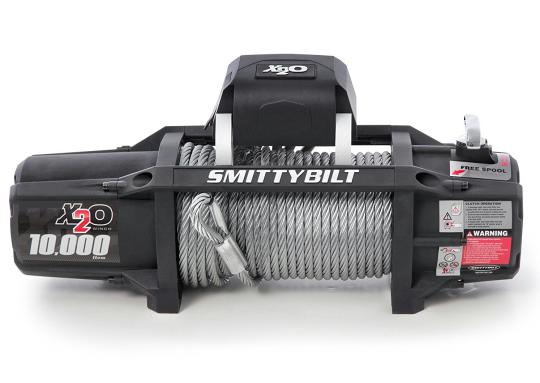
Smittybilt 97510 X2O Waterproof Winch – 10000 lb. Load Capacity:
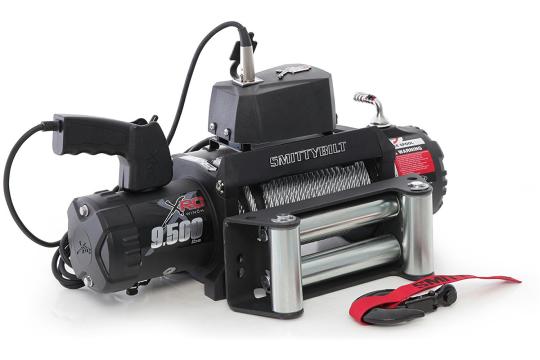
Smittybilt 98495 XRC Synthetic Rope Winch – 9500 lb. Load Capacity:
Winch Accessory Kit:
Either buy or put together a winch accessory kit. Your kit should include:
Gloves – To protect your hands from the winch cable.
Snatch block – To run the line to a fixed object and back to your vehicle for a double line pull. Also comes in handy if you’re trying to winch a buddy’s truck on to a trailer for them.
Tree trunk protector – Don’t wrap your cables around trees and damage them.
Large shackle – Can be handy when trying to secure your winch line or recovery strap.
Tow strap (recovery strap) – You may want to just pull a vehicle loose with another vehicle instead of winching – DO NOT use tow straps with hooks on the end. They can become a deadly projectile.

